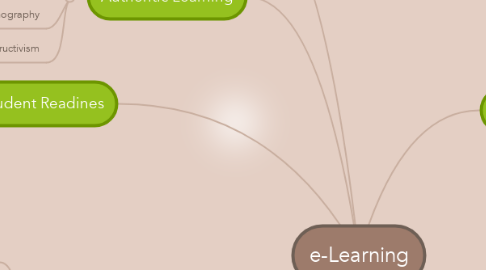e-Learning
von Daryl Ann Borel


1. Learning Management System
1.1. Interface
1.2. User-friendly
1.3. Layout and Design
1.4. Authoring Tool
1.5. Infrastructure
1.6. Technical Support
2. Collaboration
2.1. Constructivism Approach
2.2. Project-based
2.3. Virtual Teams and Groups
3. Student Readines
3.1. Self-directed learner
3.2. Time management
3.3. Responsibility of own learning
3.4. Learning Styles
4. Student Engagement
4.1. Introductory/Ice breaker Activities
4.2. Games and Simulations
4.3. Assignments
4.4. Active Learning
4.5. Motivation
5. Authentic Learning
5.1. Real-world relevance
5.2. Social Presence
5.3. Phenomenography
5.4. Constructivism
6. Sense of Community
7. Interaction
7.1. Asychronous
7.1.1. Discussion Board
7.1.2. Email
7.1.3. Study Guide/Handbook
7.1.4. Course Announcements
7.1.5. Course Documents (video/audio/text files)
7.1.6. Group Wiki
7.1.7. Blog
7.1.8. CD's
7.2. Sychronous
7.2.1. Web Conferencing
7.2.1.1. Adobe Connect Pro
7.2.1.2. Skype
7.2.1.3. Elluminate Live
7.2.1.4. Saba Centra
7.2.1.5. Wimba Live
7.2.2. Instant Messaging
7.2.3. Conference Calls
7.2.4. Virtual Worlds (i.e. Second Life)
